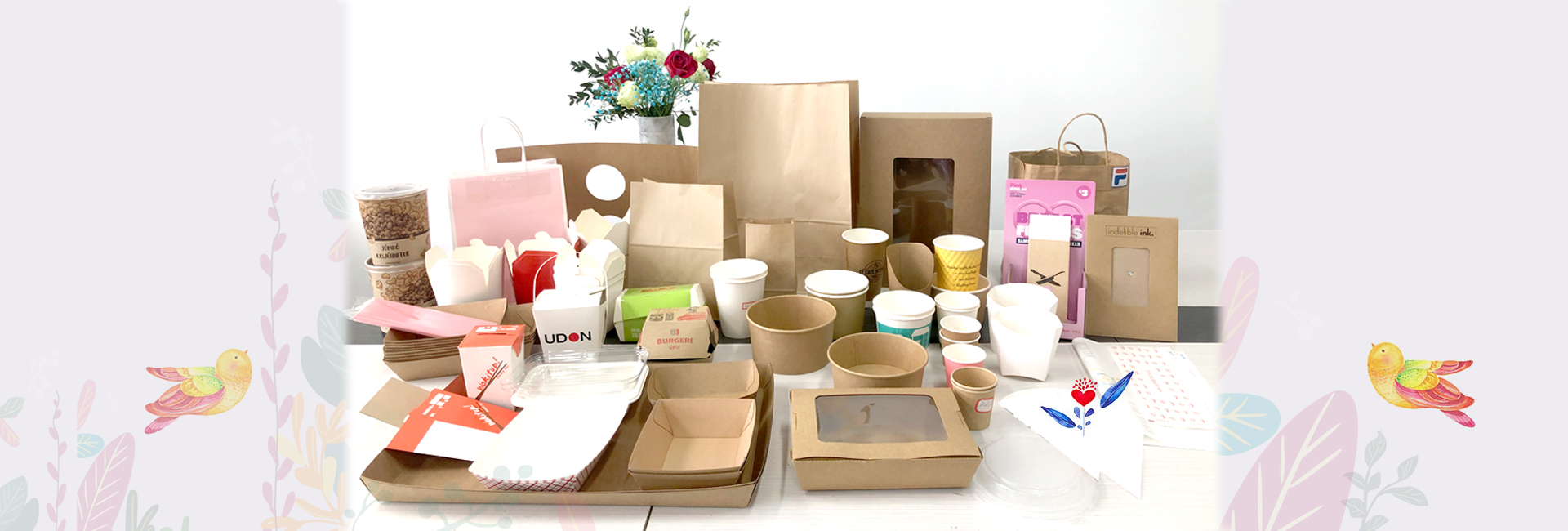Bamboo fiber + bagasse! Make perfect biodegradable tableware: low cost, high strength, hydrophobic and oil resistant, half degrades in 2 months
Disposable tableware has brought convenience to people's life, especially with the development of the food delivery industry, the number of disposable tableware consumed by people has soared. Our country's online takeout platforms are dominated by certain group and certain hungry. An environmental protection organization has carried out a statistic on the amount of disposable dinnerwork consumed by it. It found that an average of 3.27 disposable plastic dinnerwork will be consumed per order, then these platforms will consume nearly 80 million a day, not including the consumption of other platforms and the traditional catering outlet. Around the world, 16 billion disposable paper coffee cups are consumed every year, and 1 billion plastic straws are discarded every day. This huge amount of consumption puts about 8 million tons of plastic waste into the ocean every year, which would take a conservative estimate of 450 years to degrade.
Bamboo fibers and bagasse are woven into disposable tableware
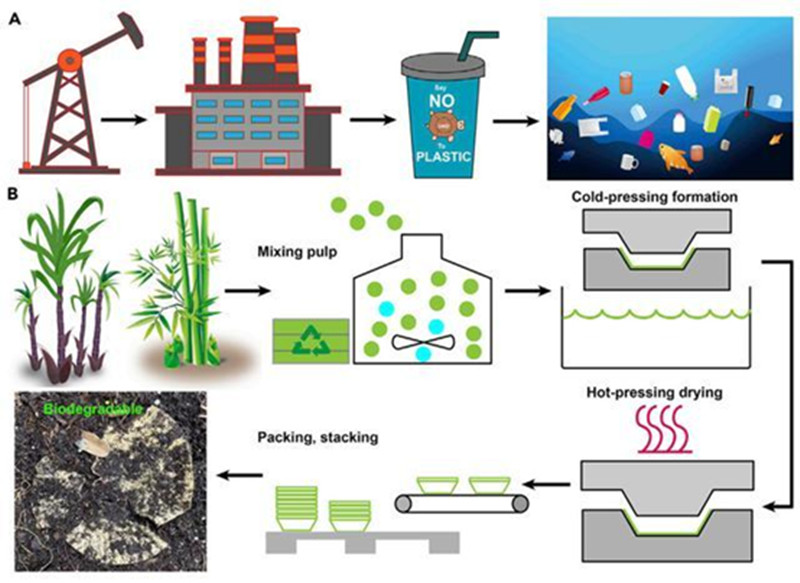
Figure 1. (A) Schematic diagram of disposable tableware manufacturing from petroleum; (B) Schematic illustration of biodegradable tableware production using bagasse and bamboo fibres.
Half of it degrades in 60 days
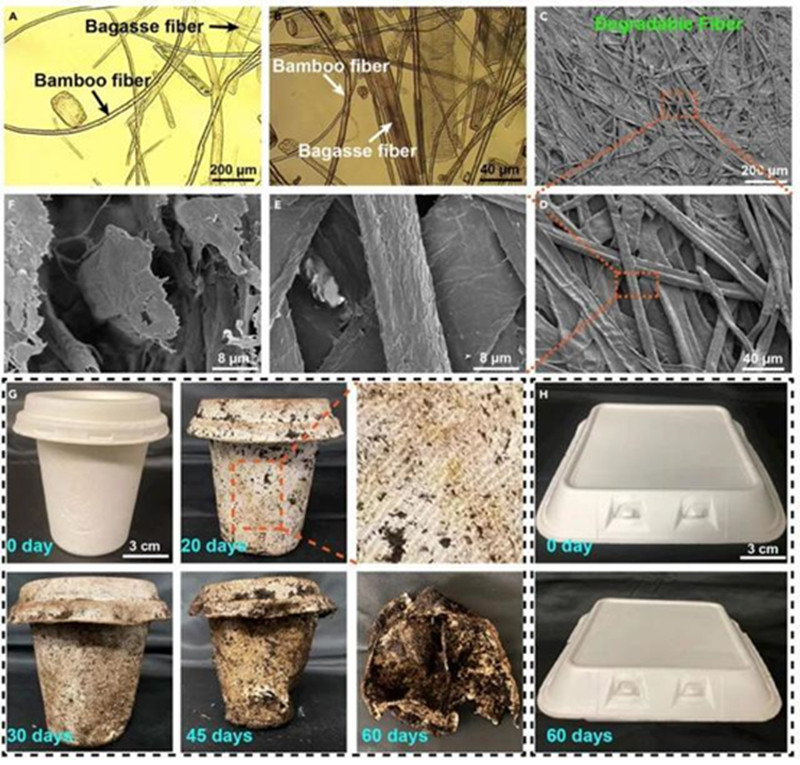
FIG. 2. (A-B) Optical microscopic images of mixed fibers at different magnification; (C-f) SEM images of tableware surface at different magnification; (G) Biodegradability of mixed fiber tableware compared with plastic tableware (H).
Using electron microscopy, the researchers found that melting of lignin in the hot-pressed fibers and hydrogen bonding between the cellulose bind the fibers tightly together, forming a 3D network that improves water resistance and strength.
To study the tableware's biodegradability, the researchers buried them in soil and regularly checked for changes in shape and weight. It was found that yellow fungus appeared on the surface of tableware after 20 days of embedding, began to deform after 30-45 days, and lost its shape completely and gradually disappeared after 60 days. And the weight of the cup dropped from 7.99g to 4.18g after 60 days, almost halving. In contrast, the appearance and shape of polystyrene (PS) tableware did not change after 60 days.
Pb content is only 1/8 of the standard
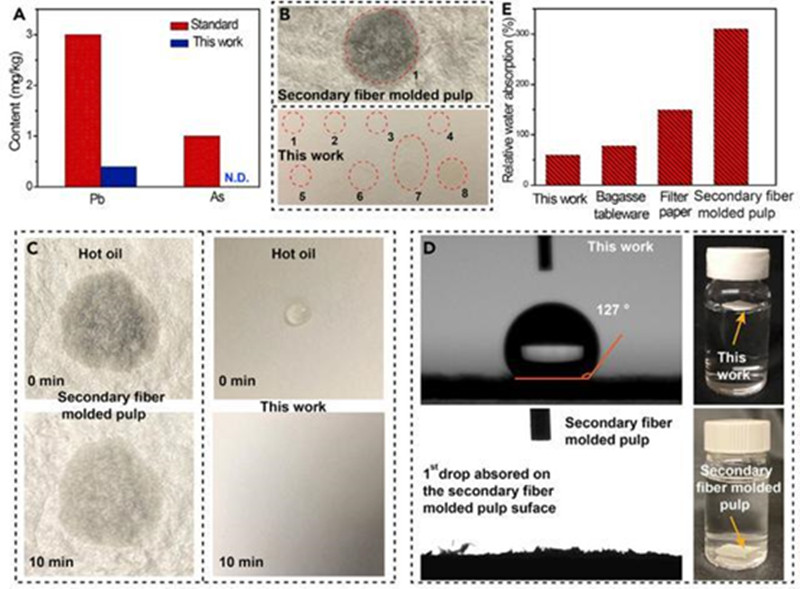
Figure 3. Heavy METAL CONTENT and oil resistance of mixed fiber tableware. (A) Comparison of heavy metal content in tableware; (B-C) oil resistance of tableware; (D-E) Contact Angle and water absorption of tableware.
Since it is used As tableware, it is necessary to ensure its safety first, especially heavy metals, such As Pb and As content can not exceed the standard. According to European Regulation on Food Contact Materials (EC) No. 1935/2004 and Chinese National Food Safety Standard (Food Contact paper and board materials and their products) GB 4806.8-2016,23,24, the content of Pb and As should be less than 3.0 mg/kg and 1.0 mg/kg, respectively. Inductively coupled plasma emission spectrometry (ICP-OES) was used to analyze the Pb and As contents in the mixed fiber tableware. It was found that the Pb content was 0.3633 mg/kg, which was only 1/8 of the standard value, and no As was detected.
As tableware, oil and water resistance is also critical. The contact Angle of mixed fiber tableware to water reached 127°, the contact Angle of secondary fiber molding pulp SFMP and filter paper to water was 0°, and the commercial bagasse tableware was 93°. The mixed fiber material showed excellent hydrophobicity. Moreover, the water absorption of mixed fiber tableware was only 59.4%, while that of commercial bagasse tableware was 77.5%, filter paper was 149.2%, and SFMP was 310%. Such low water absorption was due to the high hydrophobicity and compact structure of mixed fiber.
To evaluate the oil resistance of the tableware, the researchers conducted an analysis according to the Technical Association of the Pulp and Paper Industry (TAPPI) 559pM-96 standard and found that the mixed fiber tableware had a level 6 oil resistance, much higher than that of SFMP (level 1), commercial biodegradable bagasse tableware (level 4) and filter paper (level 1), showing excellent oil resistance
It holds up to 380 times its own weight
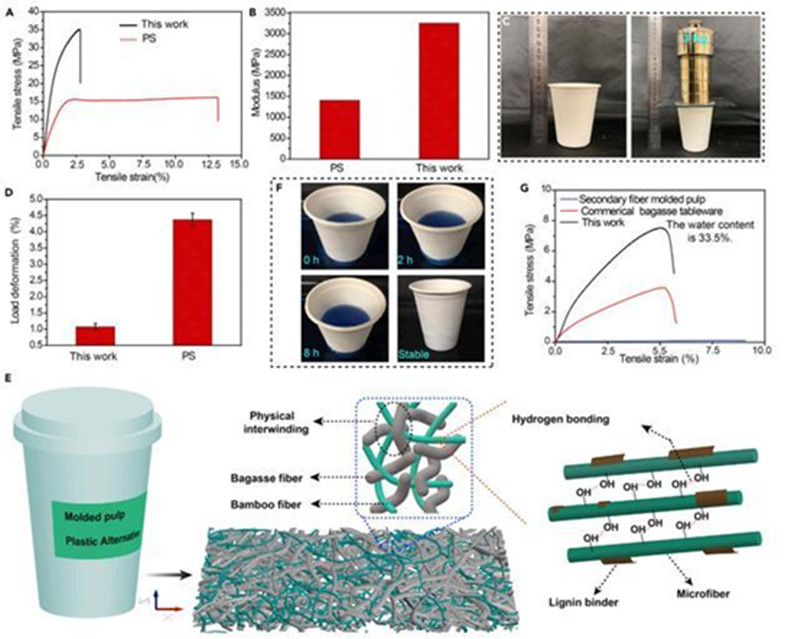
Figure 4. Mechanical properties of mixed fiber tableware.
The mechanical properties of the mixed fiber and PS tableware were compared. The tensile strength was 35.0 MPa, at least two times higher than that of the PS plastic cup (15.6 MPa), and the Young's modulus was 3.25 GPa, much higher than that of the PS plastic cup (1.40 GPa). A 7.9-gram cup of mixed fiber paper can hold a weight of 3 kilograms and still keep its shape, which is 380 times its own weight.
Carbon dioxide emissions are 97% lower than plastic
The researchers estimated the amount of carbon dioxide emitted during the production of mixed fibre tableware. It is reported that the carbon dioxide emissions of producing 1 kg of foaming PS plastic are 7.36 kg; According to Pro-Carton, the European Association of Carton Manufacturers, the emissions from producing 1 kg of moulded pulp products are 0.22 kg. Therefore, the CO2 emission of molded mixed fiber tableware is 97% lower than that of PS tableware, and 65% lower than that of pass-through paper and PLA plastic tableware.
The cost is close to PS cutlery
In addition to good performance, cheap materials are king. Using statistics from the Plastics Insight-Market Intelligence website, the researchers found that the blended fiber tableware cost $2,333 / ton, half that of PLA ($4,750 / ton) and close to PS ($2,177 / ton).
Conclusion: A hybrid fiber tableware with few faults
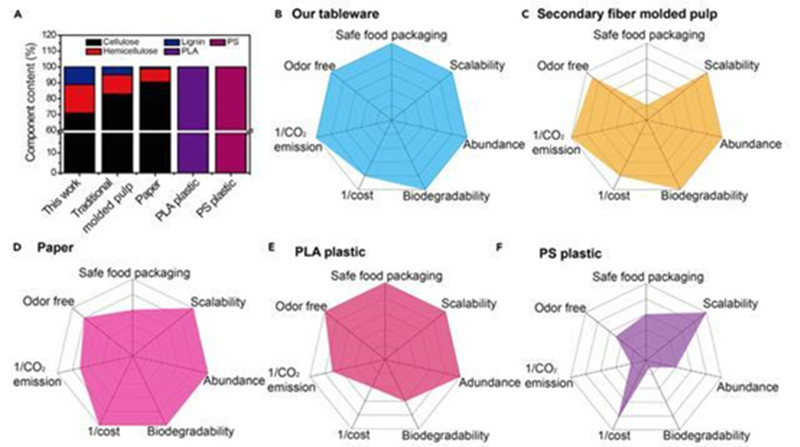
Figure 5. Comparison of the advantages of mixed fiber tableware with other materials
In order to solve the increasingly serious "white pollution" problem, Zhu Hongli's research group at Northeastern University in the United States processed bamboo fiber and bagasse fiber by blending → cold pressing → hot pressing, and prepared a fast degradation tableware, which only needs 60 days to degrade 48%. The content of Pb in tableware was 0.3633 mg/kg, which was only 1/8 of the standard. Excellent water and oil resistance; The tensile strength is 35.0 MPa and Young's modulus is 3.25 GPa, which is much higher than PS plastic cup. The CO2 emission of producing 1 kg of products is 0.22 kg, 97% lower than that of PS tableware, and the cost is only $2,333 / ton, which is close to that of PS tableware ($2,177 / ton). From safety, odor, CO2 emissions, cost, biodegradation, abundance and machinability seven aspects were analyzed, it is not hard to see compared with other materials, the tableware of the hybrid fiber materials are perfect in every respect, if mass production, to solve "white pollution" problem all over the world is just around the corner.
For any questions, please feel free to contact us.
Email: rf03@risingfortunetrading.com
Wechat/Whatsapp: +86 158 0594 7294
Contact: Nancy Liu







